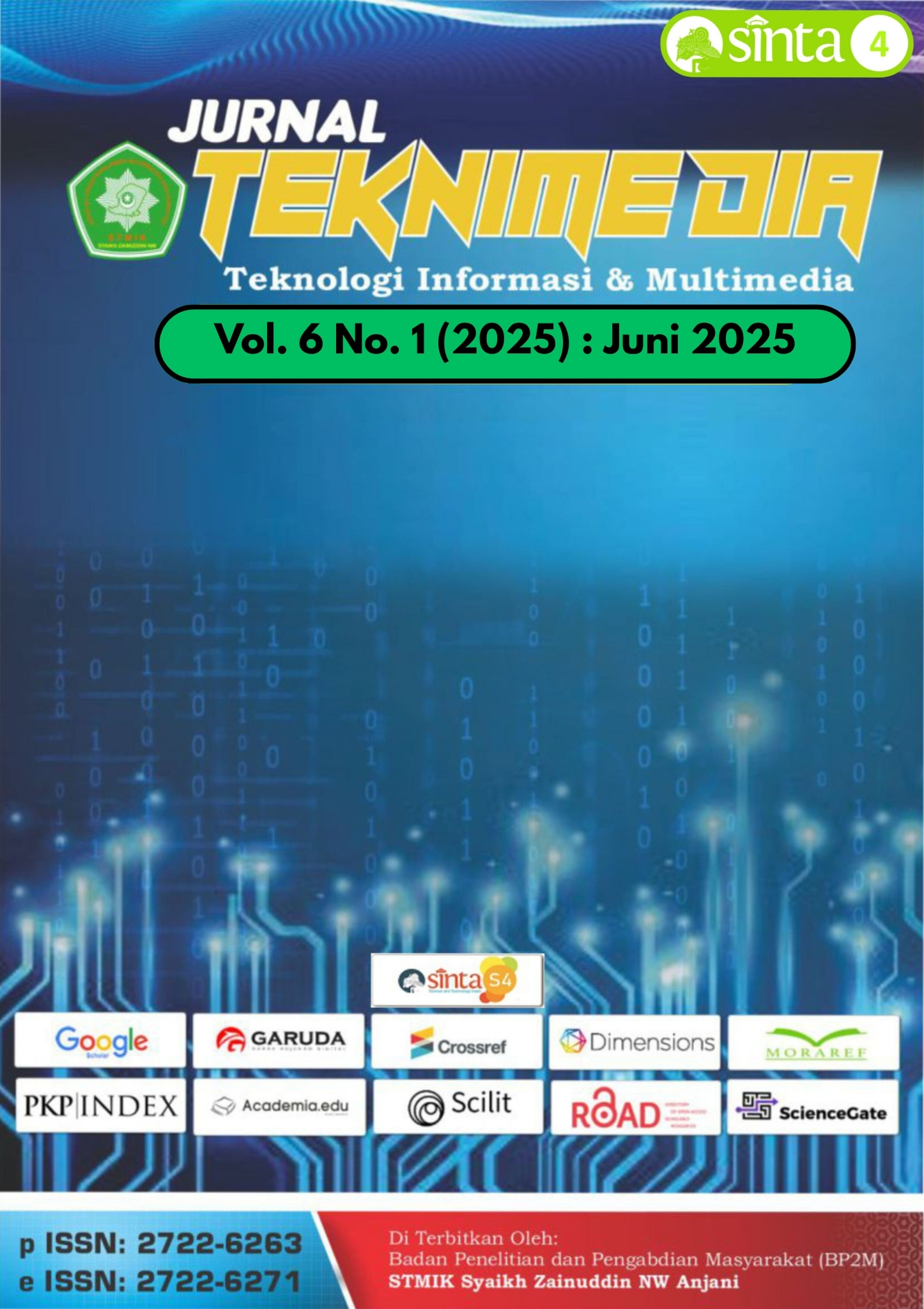OPTIMASI PROTOKOL ROUTING DSDV MENGGUNAKAN ALGORITMA TIME PREDICTION PADA JARINGAN MANET
Abstract
The rapid movement of nodes and signal interference in Mobile Ad Hoc Networks (MANETs) cause communication routes to become unstable and often lead to packet loss. One of the major drawbacks of the Destination Sequenced Distance Vector (DSDV) protocol is its inability to maintain optimal network performance under such conditions. To address this issue, this study proposes a modification of the DSDV protocol by implementing a node's residual time prediction algorithm, named TimePrediction-DSDV, to enhance route stability and reduce the impact of signal interference. Simulations were conducted using Network Simulator version 2.35 on the Linux Ubuntu 14.04 operating system, with node density scenarios of 25, 50, and 100 nodes, and speeds of 30, 60, and 90 m/s in a 1500x1500 meter squared area. The performance parameters tested included throughput, end-to-end delay, and packet delivery ratio (PDR). The simulation results show that TimePrediction-DSDV significantly improves performance across all scenarios. For the throughput test, the average increase was 15% for 25 nodes, 14.5% for 50 nodes, and 13% for 100 nodes. For the end-to-end delay test, the decrease was 22% for 25 nodes, 20.8% for 50 nodes, and 19.5% for 100 nodes. For the Packet Delivery Ratio (PDR) test, the increase was 12.5% for 25 nodes, 11.6% for 50 nodes, and 10.67% for 100 nodes. Although network performance decreases with increased node density and speed, TimePrediction-DSDV consistently shows better results compared to the standard DSDV in all tested scenarios.
Copyright (c) 2025 TEKNIMEDIA: Teknologi Informasi dan Multimedia

This work is licensed under a Creative Commons Attribution-ShareAlike 4.0 International License.
Semua tulisan pada jurnal ini menjadi tanggungjawab penuh penulis. Jurnal Teknimedia memberikan akses terbuka terhadap siapapun agar informasi dan temuan pada artikel tersebut bermanfaat bagi semua orang. Jurnal Teknimedia dapat diakses dan diunduh secara gratis, tanpa dipungut biaya, sesuai dengan lisensi creative commons yang digunakan.

Jurnal TEKNIMEDIA : Teknologi Informasi dan Multimedia is licensed under a Lisensi Creative Commons Atribusi-BerbagiSerupa 4.0 Internasional


.png)





